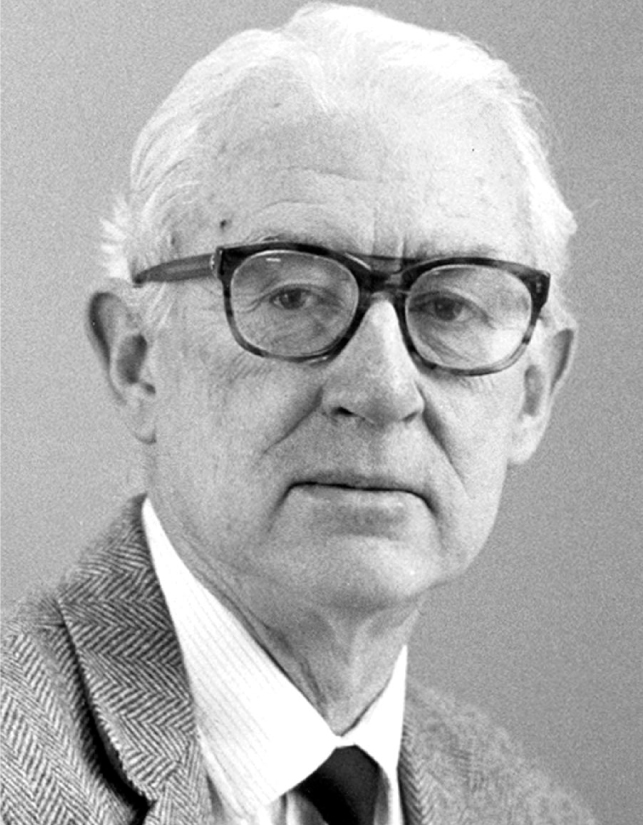Frank Slagle Ham
DOI: 10.1063/1.1611363
Frank Slagle Ham, a theoretical solid-state physicist best known for his many contributions to the understanding of the Jahn—Teller (JT) effect in condensed matter, died on 12 December 2002 in Schenectady, New York. While being treated for a stroke he had suffered in May 2002, Frank—though never a smoker—was diagnosed with lung cancer, which eventually led to his death.
Born in Bronxville, New York, on 15 August 1928, Frank grew up in Washington, DC, and obtained both his AB (1950) and PhD (1955) in physics at Harvard University. His doctoral dissertation, under Harvey Brooks, represented an early application of the quantum defect method to the study of the electronic structure of solids.
After a postdoctoral period at the University of Illinois, he joined the General Electric Research Laboratory in Schenectady in 1955; he was employed at the lab until his retirement in 1988. During that 33-year period, he spent a year (1971–72) on a Guggenheim fellowship at Oxford University’s Clarendon Laboratory in England and a year (1976–77) as visiting professor at Clemson University. He also held adjunct and visiting professorships at Rensselaer Polytechnic Institute (1968–69, 1980–91) and at Lehigh University, where he was active in research from 1983 until his death.
At GE, Frank expanded his energy-band calculations to provide the first practical application of the KKR (Korringa-Kohn-Rostoker) Green’s function method to such problems. He subsequently published several articles that contained analytic solutions for the diffusion and aggregation of impurities in crystalline solids and made contributions to the interpretation of luminescence energy-transfer mechanisms in crystals.
In the mid-1960s, Frank, like other theorists at the time, was concerned about electron paramagnetic resonance (EPR) spectra of many impurity ions that have orbitally degenerate ground states. The states appeared to show no evidence of the symmetry-lowering JT distortions predicted by theory. Frank was the first to recognize that the JT effect was actually present all along—not static but dynamic—with rapid tunneling from one distortion direction to another. Hence, an average was being observed in the EPR spectrum and the system superficially appeared undistorted. Frank showed that predictable telltale changes in the spectra’s parameters provided a direct quantitative determination of the distortions’ symmetry and magnitude. In subsequent years, he further demonstrated that the dynamic JT effect can have important consequences in all forms of spectroscopy. Terms such as the “Ham effect” and the various “Ham reduction factors” for spin—orbit interaction, orbital angular momentum, and magnetic and strain perturbations are now essential parlance among spectroscopists.
Throughout his career, Frank was interested in the vibronic coupling between the surrounding lattice and an impurity ion or lattice defect. He made important contributions to a number of problems, including the relaxed excited state of the F-center in alkali halides; the EPR, acoustic, optical, and Mössbauer spectra of transition element ions in a variety of ionic and semiconductor hosts; and the unusual EPR spectra of interstitial lithium and the negatively charged states of the lattice vacancy and substitutional platinum in silicon. He also worked on the inverted level ordering for double acceptors and acceptor-bound excitons in semiconductors, the Zeeman effect on double-donor spin—triplet levels in silicon, and the effect of Berry’s phase on the sequence of vibronic states for a defect.
Frank made many important but less visible contributions by generously sharing his knowledge and guiding others in interpreting their data. If one was wrong, Frank’s criticism was incisive, but he delivered it with such patience and courtesy that one’s pleasure in finally seeing the point was unclouded by any feeling of inferiority. Whether graduate student or senior scientist, one would emerge grateful, more knowledgeable, and much closer to the correct interpretation.
Frank served on the executive committee of the American Physical Society’s division of condensed matter physics from 1976 to 1978 and on APS’s Apker Award committee from 1983 to 1985. He was a member of the editorial board for Physical Review B from 1978 to 1982.
Aside from his scientific career, Frank was an enthusiastic environmentalist. In the early 1960s, he played a major role in raising the money to purchase and protect an undeveloped 112-acre tract of natural forest in Niskayuna, a suburb of Schenectady. Named the Lisha Kill Natural Preserve, this lovely natural haven stands today as an appropriate monument to Frank, who had been the official steward of the preserve from its inception.
Throughout his life, Frank set for himself the highest standards of honesty and integrity and produced work of the utmost reliability. This gracious, likeable person is missed by the many scientists whose research he has strongly influenced and particularly by those of us who were lucky enough to have known him personally.


More about the Authors
George D. Watkins. Lehigh University, Bethlehem, Pennsylvania, US.
W. Beall Fowler. Lehigh University, Bethlehem, Pennsylvania, US.
Michael D. Sturge. Dartmouth College, Hanover, New Hampshire, US.
